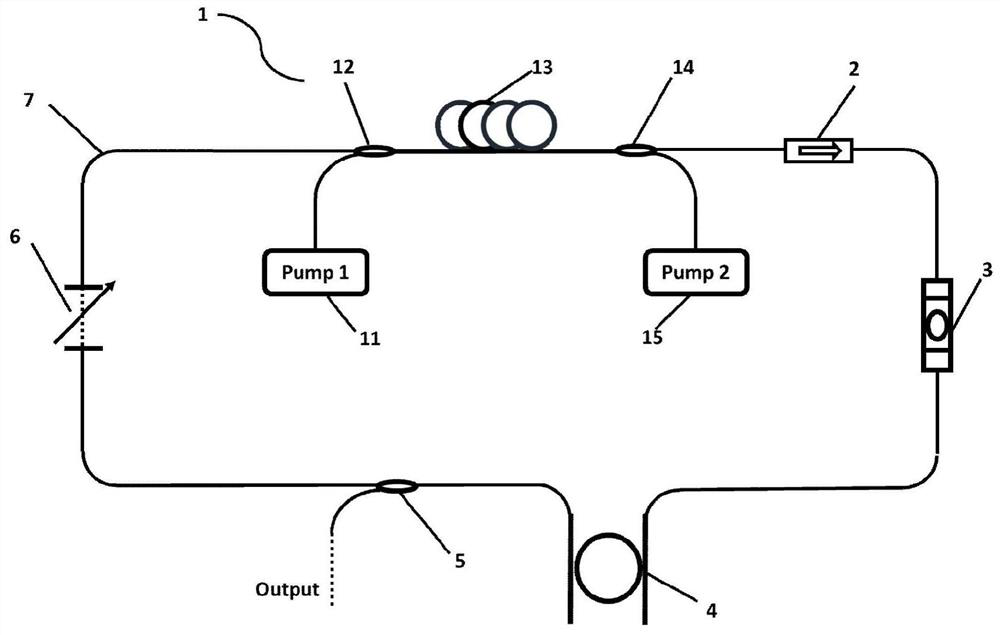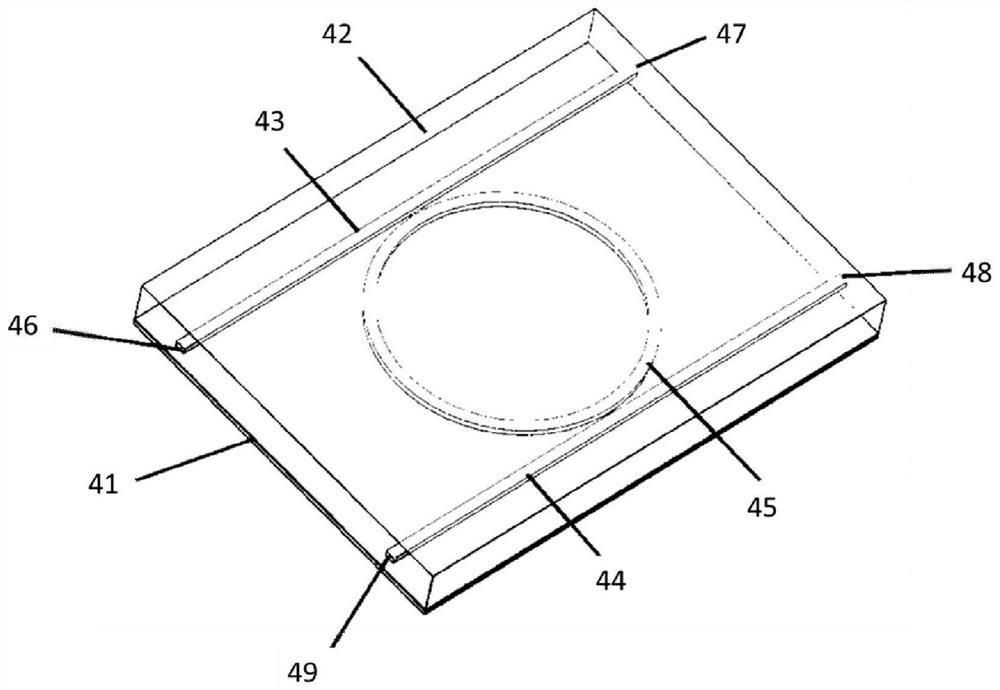Multiple repetition rate mode-locked laser based on microring resonator
A micro-ring resonator and mode-locked laser technology, which is applied in lasers, laser components, phonon exciters, etc., can solve the problems of multi-longitudinal mode instability, inability to obtain intracavity gain, time jitter, etc., and achieve strong Field enhancement factor and nonlinear coefficient, solving the problem of multi-longitudinal mode instability, and improving the effect of mode spacing
- Summary
- Abstract
- Description
- Claims
- Application Information
AI Technical Summary
Problems solved by technology
Method used
Image
Examples
Embodiment Construction
[0043] figure 1 It is a schematic diagram of the structure principle of the present invention, as shown in the figure, the mode-locked laser system provided by the present invention based on the repetition frequency of the micro-ring resonator can be freely adjusted in steps of the free spectral range of the micro-ring resonator, including sequentially passing single-mode The first wavelength division multiplexer 12 connected with the optical fiber 7, the erbium-doped gain fiber 13, the second wavelength division multiplexer 14, the optical isolator 2, the polarization controller 3, the four-port microring resonator cavity 4, and the optical beam splitter 5 and optical delay line 6. The above-mentioned components are connected sequentially through single-mode optical fibers to form a ring cavity, and there is no special requirement for the sequence of the components.
[0044] The first pumping light source 11 and the second pumping light source 15 are respectively arranged at...
PUM
| Property | Measurement | Unit |
|---|---|---|
| length | aaaaa | aaaaa |
| wavelength | aaaaa | aaaaa |
Abstract
Description
Claims
Application Information
 Login to View More
Login to View More - R&D
- Intellectual Property
- Life Sciences
- Materials
- Tech Scout
- Unparalleled Data Quality
- Higher Quality Content
- 60% Fewer Hallucinations
Browse by: Latest US Patents, China's latest patents, Technical Efficacy Thesaurus, Application Domain, Technology Topic, Popular Technical Reports.
© 2025 PatSnap. All rights reserved.Legal|Privacy policy|Modern Slavery Act Transparency Statement|Sitemap|About US| Contact US: help@patsnap.com



